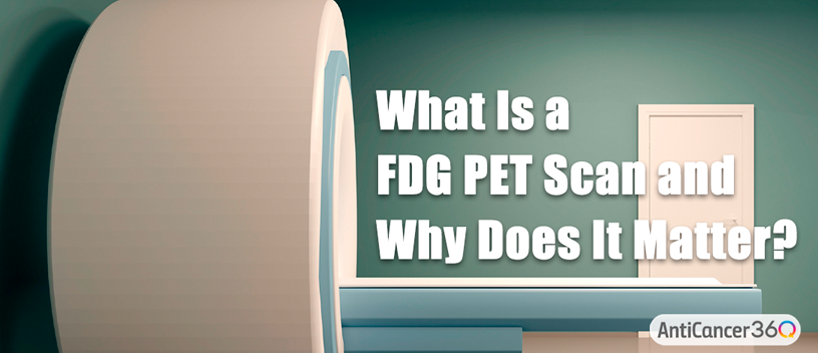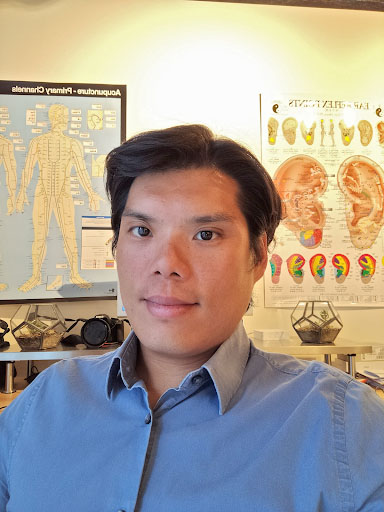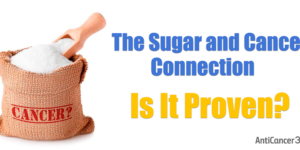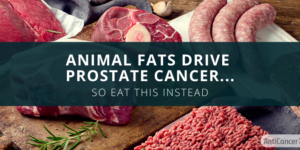Don’t have time to read? Here’s a quick summary:
- FDG PET scans involve a specialized sugar that shows up on PET scans. This sugar injected into your body. And since most tumors will take up more of it, it allows the tumor to show up on the PET scan.
- Besides helping to diagnose cancer, FDG PET scans can also tell you if your cancer consumes a lot of sugar (i.e. if it’s “glucose avid” or not.)
- If your cancer does NOT consume a lot of sugar… strategies like the ketogenic diet and/or “antiglycolytic substances” probably WON’T help you.
- For those cancers that do consume a lot of sugar, follow up FDG PET scans can also tell you whether or not you’re progressing with a given treatment. In this case, a decrease in the cancer’s sugar uptake is a good sign.
- It’s important to know about FDG PET so you that you don’t apply the wrong strategies to your case (ex. using a ketogenic diet for a non glucose avid cancer.)
If you’ve been looking into different way to help fight cancer, you’ve probably run into the idea that sugar feeds cancer[1]. Though this concept is sometimes explained incorrectly, it is still a central concept when you’re looking at cancer from the metabolic perspective[2].
But the idea that sugar feeds cancer is also the foundation for one of the most basic tests used when diagnosing cancer. We’re talking about the the” FDG PET scan.” And knowing about this can help you make some important decisions on how you can help to fight cancer.
So today, we’re going to talk about FDG PET scans, what they are, and what they mean for you…
Sugar That Shows Up On A PET Scan
FDG stands for “fluorodeoxyglucose.” This is basically sugar that has been “tagged” with a “radiopharmaceutical” called “flourine-18.”
Most cancer cell use a lot more sugar than normal healthy cells[3]. Because of this, they take in a lot more FDG thinking that it’s just normal sugar.
But the flourine-18 on the sugar emits energy that is visible to the PET scanner. And because the tumor takes in so much of it, you can see the tumor on the PET SCAN itself.
Here’s an example of an FDG PET scan showing cancer of the tongue before and after treatment. The cancer eats up a lot of the radiolabeled sugar (FDG) so it shows up as the black spots in picture D (before treatment.) Once the cancer has been eliminated or reduced in picture H (after treatment) those tissues no longer take in a lot of the radiolabeled sugar, so nothing shows up.
Note: Some other tissues (like brain tissue) also takes in a lot of FDG. It can also show up in the kidney and bladder as the body works to remove the FDG from your body. This is why some non-cancerous tissues will also “light up” on the PET scan.
What Do FDG PET Scans Tell Us?
FDG PET scans are important for a few main reasons…
The most obvious reason is that they help us detect cancer. In fact, FDG is used in over 90% of cases where PET scans are used to detect cancer.
The second reason is that it can tell you whether or not your cancer is “glucose avid.” Glucose avid means that the cancer does indeed consume a lot of sugar. This is important to know when making decisions on how you can help your body fight the cancer (aside from your oncologist’s treatments.)
People with cancers that are not glucose avid, won’t likely benefit from a ketogenic diet, for example. Nor are they likely to benefit from other strategies that target cancer’s ability to consume sugar (i.e. antiglycolytic.) Having this information can help you decide on the best overall approach.
Finally… FDG PET can also tell you the amount of sugar taken up by the tumor. This is often referred to as “standard uptake value” or “SUV,” and it tells you whether or not your overall strategy is working.
So while a visibly shrunken tumor is obviously a good sign, reduced sugar uptake by the cancer is also a sign of good response to your treatment and overall program.
In fact, when a cancer is responding well to a certain approach, it can show reductions in sugar uptake well before the tumor starts physically shrinking.
A Clearer Perspective
So in most cases, FDG PET will be something that your oncologist is already using to help assess your situation overall.
But it’s also important for you to know about it, so that you can make the best decisions for your case. Because as I alluded to earlier, I’ve had people come to me wanting to try a ketogenic diet (which reduces blood sugar), even when their cancers were not glucose avid.
As with anything related to health, I encourage people to play an active role in their healing process. And having a clearer perspective of your situation is an important part of this process.
Because of this, having some understanding of things like FDG PET scans is an important first step.
Are You A Candidate For Our Program?
If you’d like to learn more about the AntiCancer360 approach and see if we can help you… please watch our free online webinar to learn more about our approach. Then at the end, you’ll be able to schedule a free call with someone from our team so that we can discuss your case in more detail.
Citations:
Gene Wei is a Board Certified Doctor of Oriental Medicine in the state of Florida, and the founder of AntiCancer360. He’s also a graduate of the University of California Los Angeles, and East West College of Natural Medicine.
His practice is focused on integrative and natural anticancer strategies. Over the years, he’s helped many people overcome difficult cancers… including some cases of “terminal cancer” which were able to be reversed with an “Aggressive Integrative Approach.”








